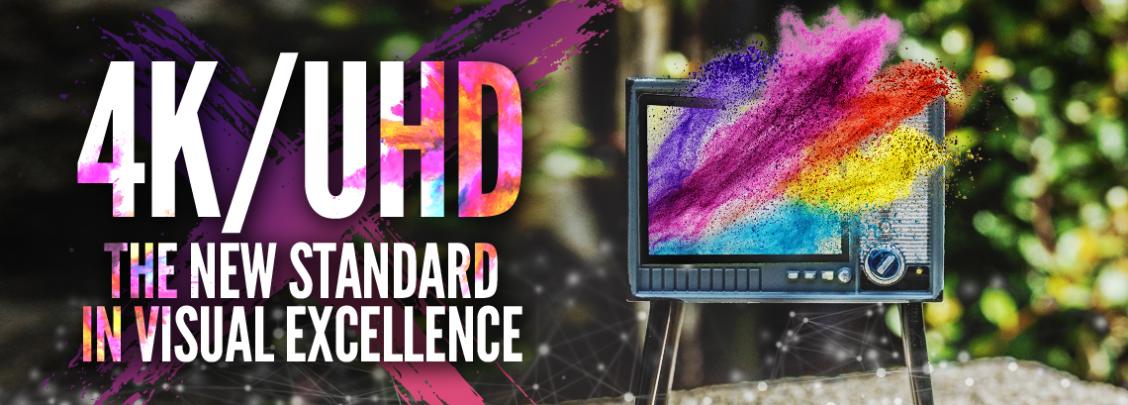4K/UHD: the new standard in visual excellence
What contributes most to perceived image quality. Is it brightness? Is it contrast ratio? Is it colour accuracy? Is it motion reproduction? Is it uniformity? Or is it resolution?
The answer is, of course: all of them. And: the TV industry has made great strides in all of them too – but perhaps none of those strides has been as noteworthy as the transition to 4K resolution. Images are much sharper, much more lifelike with more detail and better colour gradation. It’s been likened to looking through a window, rather than at a screen.
The important thing to remember, of course, is that 4K isn’t just twice the resolution of HD – it’s four times better, because 4K uses four times the number of pixels that HD does. But is it correct to call it ‘4K’?
Technically, the answer is “no”. 4K, truth be told, is a standard used in the cinema industry to describe an image 4,096 pixels across by 2,160 down. But if you do the maths, that doesn’t equate to the 16:9 aspect ratio around which consumer TVs are built. For a 2,160 pixel high image, the horizontal axis needs to have 3,840 pixels to achieve a 16:9 aspect ratio. That’s what UltraHD is: 3,840 x 2,160. It’s not strictly 4K – but the two are, for all practical purposes, interchangeable. When you’re talking about 8 million pixels, you wouldn’t notice a few missing pixels.
Size matters
When it comes to resolution, size matters – at least to some extent. While there will be a visible improvement in image sharpness and realism at smaller screen sizes (especially if you view them from close up) 4K/UHD really comes into its own at ‘normal’ viewing distances above around 40 inches, where the difference between HD and UHD becomes very clear.
Buying 4K UHD today is a safe bet in terms of ‘future proofing’ a TV. Yes, manufacturers have demonstrated 8K resolution concept TVs and 8K trial broadcasts have taken place. Some TV manufacturers have even committed to have 8K TVs available on the shelves by the time of the Tokyo Olympics in 2020. However, the fact is that today, the transition to 4K still has a long time to run. 4K material has never been more widely available from the likes of Netflix and Amazon Prime, but UK broadcasters cannot yet transmit in such high resolution – and, anecdotally, say that it could be a year or more before they can.
If 4K UHD only really comes into its own at screen sizes above 40 inches or so - then what size screen will you need to truly appreciate the difference between 4K and 8K? The answer, according to the industry, is at least 84 inches. Let’s face it: 84 inches is a good size for digital signage, for example, or a corporate foyer – but the average lounge?
There’s no doubt about it - 4K UHD is the new standard in image quality – and it’s one that looks set to prevail for many years.

 Midwich Limited, Vinces Road, Diss, Norfolk, IP22 4YT
Midwich Limited, Vinces Road, Diss, Norfolk, IP22 4YT